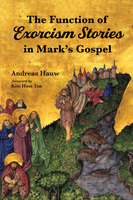The Function of Exorcism Stories in Mark's Gospel
Abstract
This book investigates stories of Jesus’ exorcisms in the Gospel of Mark. The story of Jesus’ first public ministry in the synagogue (Mark 1:21–28) and the Beelzebul controversy story (3:20–30) are examined to understand the other acts of exorcism that Jesus performed (5:1–20; 7:24–30; 9:14–32). Both Mark 1:21–28 and 3:20–30 highlight Jesus as a teacher and as an eschatological exorcist. The latter stresses Jesus’ own understanding of exorcism and relates his identity with that of the Holy Spirit. Therefore, the first two exorcism stories in Mark’s Gospel confirm Jesus as the bearer of the kingdom of God. The motif of discipleship, which is evident in both stories, contributes to delineating Jesus’ christological identity as the Son of God, as indicated by the incipit of Mark’s Gospel (Mark 1:1).
Markan exorcism stories in Mark 5:1–20; 7:24–30; and 9:14–29 further develop the presentation of Jesus’ exorcisms and other primary motifs. The motifs of authority, identity, and mission confirm the christological identity of Jesus within gentile territory, and are an important part of his mission to the gentiles. Jesus’ specific mission in Mark 9:14–29 presents the exorcism that Jesus performed in the context of his role in both death and resurrection. In this way, Jesus as the bearer of the kingdom of God defeats the kingdom of Beelzebul.

